InBody vs DEXA Scans: Which is Better?

DEXA vs InBody: Which Body Composition Scan Is Right For You?
TL;DR
If you want gold-standard accuracy, visceral-fat numbers, and bone-density trends, choose a DEXA scan. If you mainly need a quick, radiation-free check-in to watch weekly trends, an InBody scan can do the job—just control your hydration each time.
Quick-Compare Snapshot
| Metric | DEXA Scan | InBody Scan |
|---|---|---|
| Technology | Low-dose dual-energy X-ray absorptiometry | Multi-frequency bio-electrical impedance analysis (BIA) |
| Typical Error Margin | ±1–2 % body-fat (METS Performance) | ±3–5 % body-fat (METS Performance) |
| Scan Time | 10–15 minutes (scan time) | 45–60 seconds standing on device |
| Radiation | ~5 µSv ≈ 4 bananas worth (BodySpec) | None |
| Typical Price | Starts at $40 at BodySpec (view packages) | $10–$40 at many gyms |
| Key Extras | Visceral-fat, bone-density & segmental analysis | Segmental muscle-mass map |
Choosing between a DEXA scan and an InBody test comes down to a simple question: which technology best fits your goals, budget, and need for accuracy? This guide walks you through the science, trade-offs, and real-world examples so you can confidently choose the best test for your specific needs.
How Each Technology Measures Your Body
DEXA: Low-Dose X-Rays Separate Bone, Muscle & Fat
A DEXA scanner emits two X-ray beams at different energies. Dense tissue (bone) absorbs more energy; soft tissue (fat and lean mass) less. Software converts that into a 3-compartment model—fat mass, lean mass, and bone mineral content.

The scan also maps visceral fat and provides a bone-density score.
Why it matters: Hydration or recent meals have minimal impact on the results, so repeat scans typically vary by <1 % in research settings (Journal of Exercise & Nutrition).
InBody: Bio-Electrical Impedance Estimates Tissue by Conductivity
During an InBody scan, you stand barefoot on the device while holding hand electrodes. A painless multi-frequency current travels through the body.
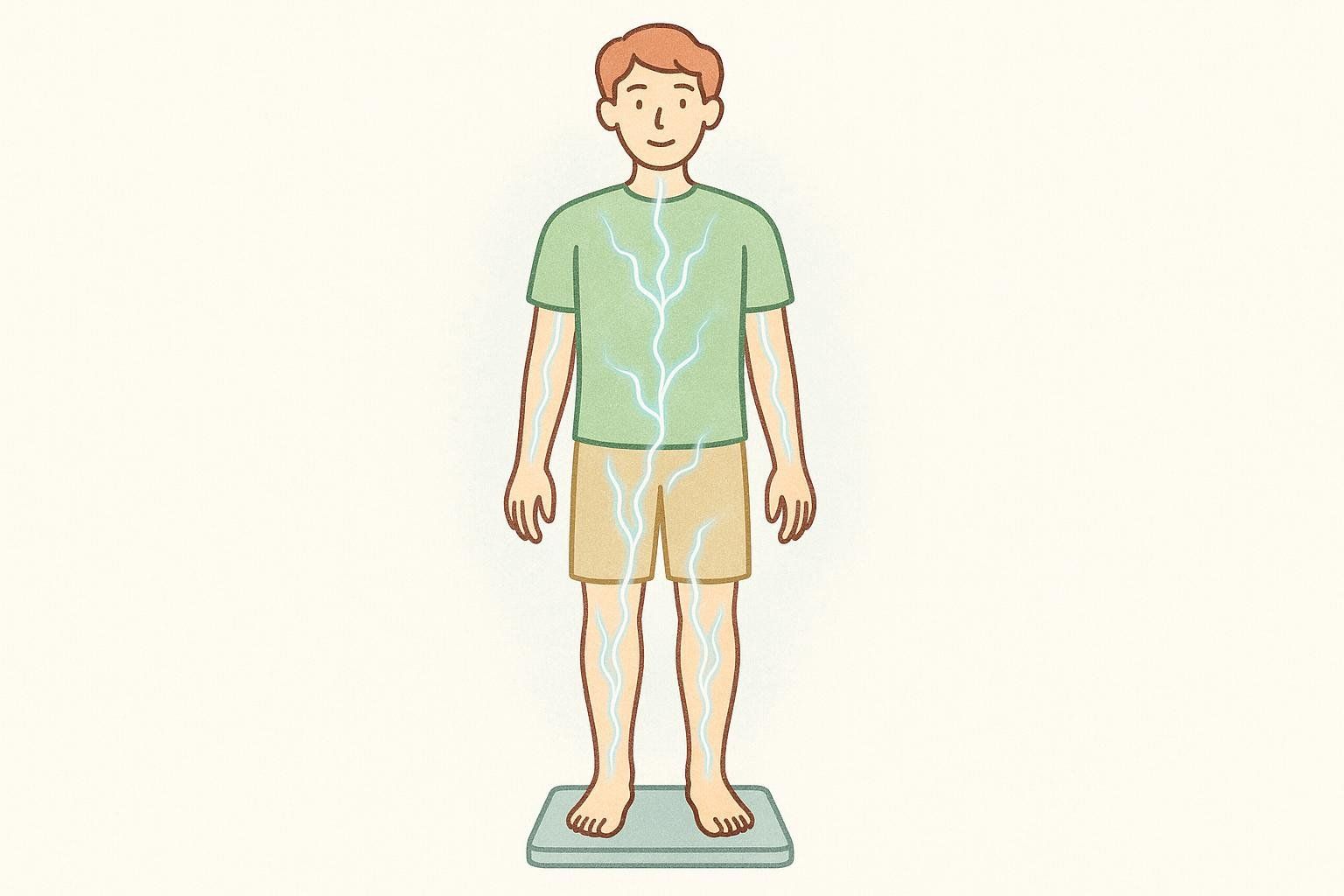
Because water-rich lean tissue conducts electricity better than fat, the device first estimates total body water, then uses proprietary equations to back-calculate fat-free mass and fat mass.
Why it matters: Hydration level, meal timing, and temporary muscle swelling after exercise can shift readings by several percentage points, but the speed and absence of radiation make InBody a popular gym “weigh-in.”
Accuracy & Reliability: What the Studies Show
| Measurement | DEXA (Gold Standard) | InBody 770/570/270 |
|---|---|---|
| Group-level body-fat error | ±1–2 % | ±3–5 % |
| Test–retest coefficient of variation | <1 % | 1–3 % |
| Hydration sensitivity | Minimal | Up to 3 % BF swing per 1 % body-water change |
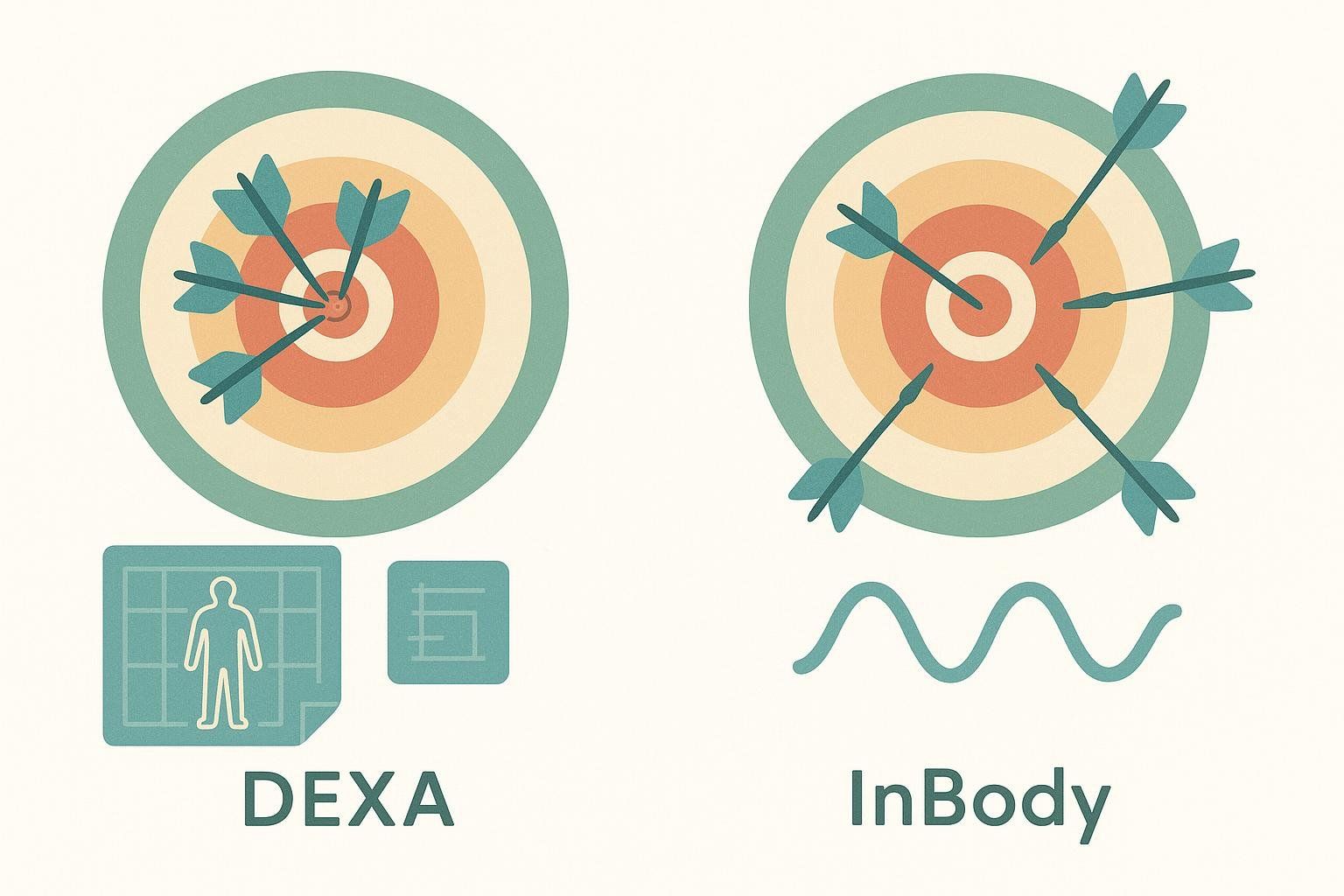
Bottom line: DEXA wins on consistency, while InBody works best as a convenient trend tracker.
Pros & Cons at a Glance
DEXA
Pros
- Gold-standard accuracy (±1–2 % BF)
- Tracks regional muscle & fat plus visceral fat
- Includes non-diagnostic bone-density insight
- Low radiation—less than a cross-country flight
Cons
- Requires lying still 7–10 minutes
- Slightly higher cost & appointment scheduling
InBody
Pros
- Lightning-fast (under a minute)
- Zero radiation
- Widely available in gyms and offices
- Easy to repeat weekly for trends
Cons
- ±3–5 % error and highly hydration-sensitive
- No bone or visceral-fat data
- Results vary by device model and firmware
Real-World Scenarios: Choosing the Right Scan
1. Emily, 29 – Marathoner Chasing Personal Records
Emily likes weekly feedback. She steps on her gym’s InBody to ensure weight-loss phases don’t cost her muscle, then books a BodySpec DEXA every quarter to confirm the overall picture before adjusting her nutrition plan.
2. Coach Carlos, 38 – Strength & Conditioning Specialist
Carlos oversees 40 athletes. Quarterly DEXA scans provide hard numbers on lean-mass changes and flag creeping visceral fat in linemen. An in-house InBody provides quick progress checks between training phases.
3. Helen, 54 – Tracking Bone Health Trends
Helen’s doctor orders diagnostic DEXAs every two years for osteopenia. Between those medical scans, Helen books non-diagnostic BodySpec whole-body DEXAs quarterly. These track bone-density trends plus body-fat changes, helping her fine-tune diet and strength training.
Decision Tree: Pick Your Best-Fit Scan
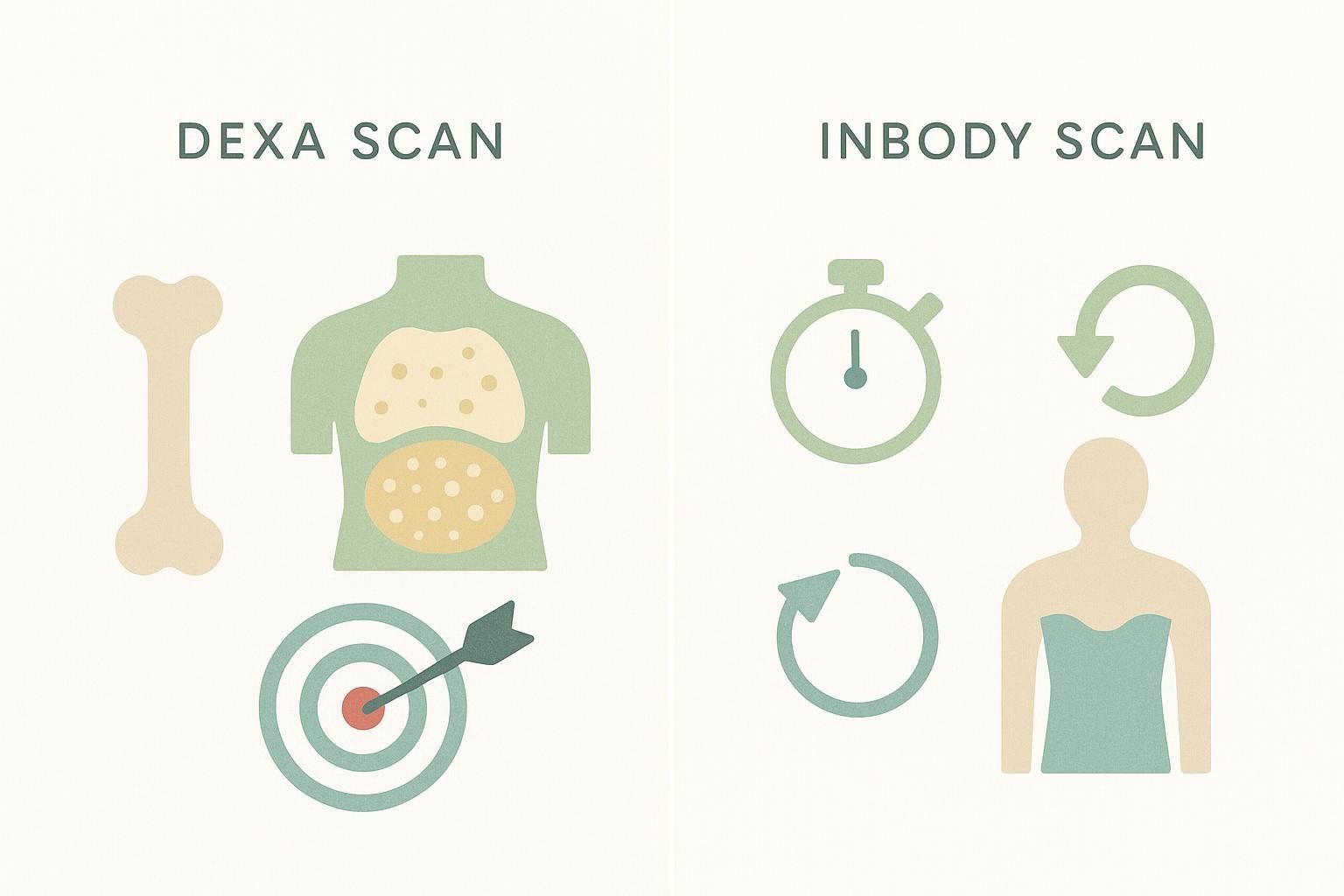
- Need bone-density metrics or visceral-fat data?
- Yes → Choose DEXA
- No → Next question
- Is ±3–5 % error acceptable for your goals?
- Yes → InBody suits rapid, frequent check-ins
- No → DEXA gives tighter accuracy
- How often will you test?
- Weekly/bi-weekly → Use InBody regularly and add a periodic DEXA baseline
- Monthly/quarterly → DEXA alone is sufficient
Cost, Convenience & Safety Considerations
- Price: BodySpec scans start at $40—see packages. InBody sessions usually run $10–$40.
- Time: Plan on about 15-20 minutes total for a DEXA visit (setup + scan + review) versus ~5 minutes for InBody.
- Radiation: Whole-body DEXA ≈ 5 µSv—less than a cross-country flight or eating four bananas (BodySpec).
- Prep: Hydration barely affects DEXA, but a 1 % body-water shift can swing InBody BF % by up to 3 % (Journal of Exercise & Nutrition). Consistency is king for both scans—use the BodySpec prep checklist (morning, fasted, similar clothes) as a universal protocol.
Frequently Asked Questions
Is a DEXA scan safe?

Yes. A whole-body DEXA exposes you to roughly 5 µSv—less radiation than a cross-country flight and about the same as eating four bananas (BodySpec).
How often should I get a DEXA?
Most BodySpec clients scan monthly or quarterly to guide training blocks. Follow your physician’s advice for medical monitoring.
How much do hydration or meals impact InBody accuracy?
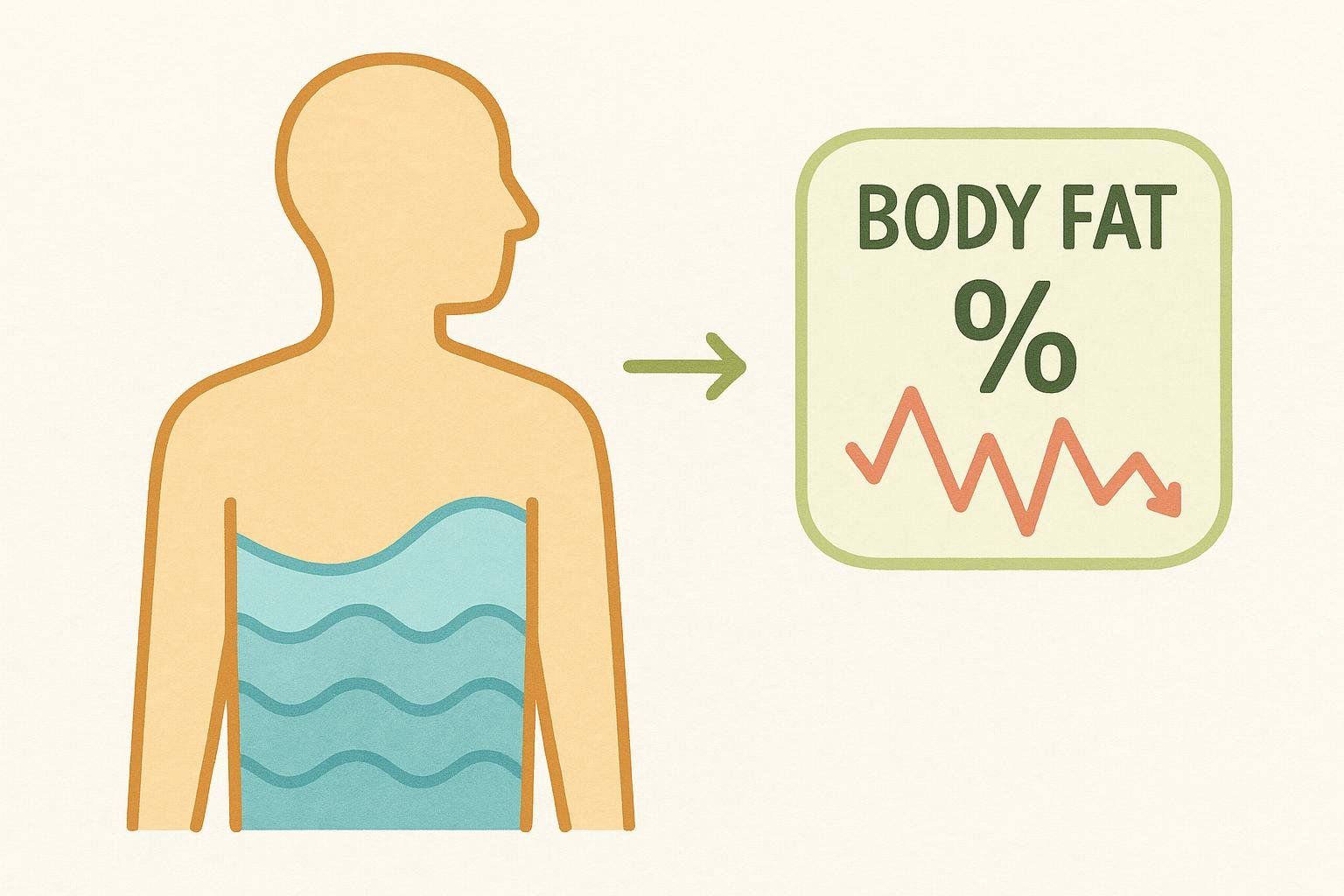
Up to a 3 % body-fat change per 1 % body-water shift (Journal of Exercise & Nutrition). Always replicate hydration, meal timing, and exercise state.
Does DEXA measure visceral fat directly?
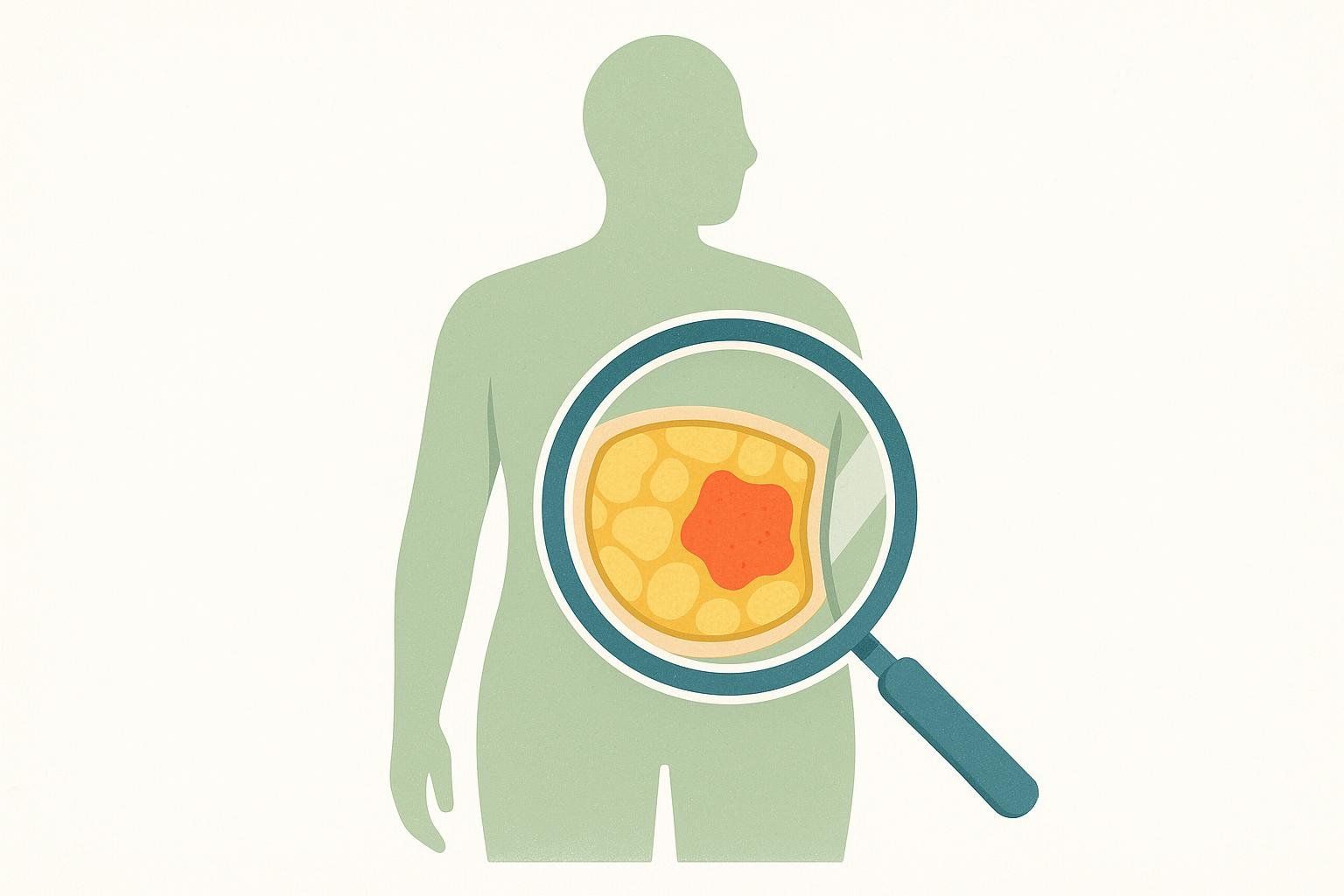
It provides a clinically validated estimate. The scanner analyzes the android (waist) region to quantify visceral adipose tissue (VAT), delivering a research-grade visceral-fat number that InBody cannot match.
Can InBody track small muscle gains?
It tracks trends, but small month-to-month changes may hide in the ±3–5 % noise. Use DEXA periodically for confirmation.
The Bottom Line
If you need ultimate accuracy, visceral-fat scores, or bone insights, DEXA is the gold standard. For quick, radiation-free checkpoints between workouts, InBody is a handy sidekick—just keep hydration consistent.
Ready to see your numbers? Book your BodySpec DEXA scan today.


